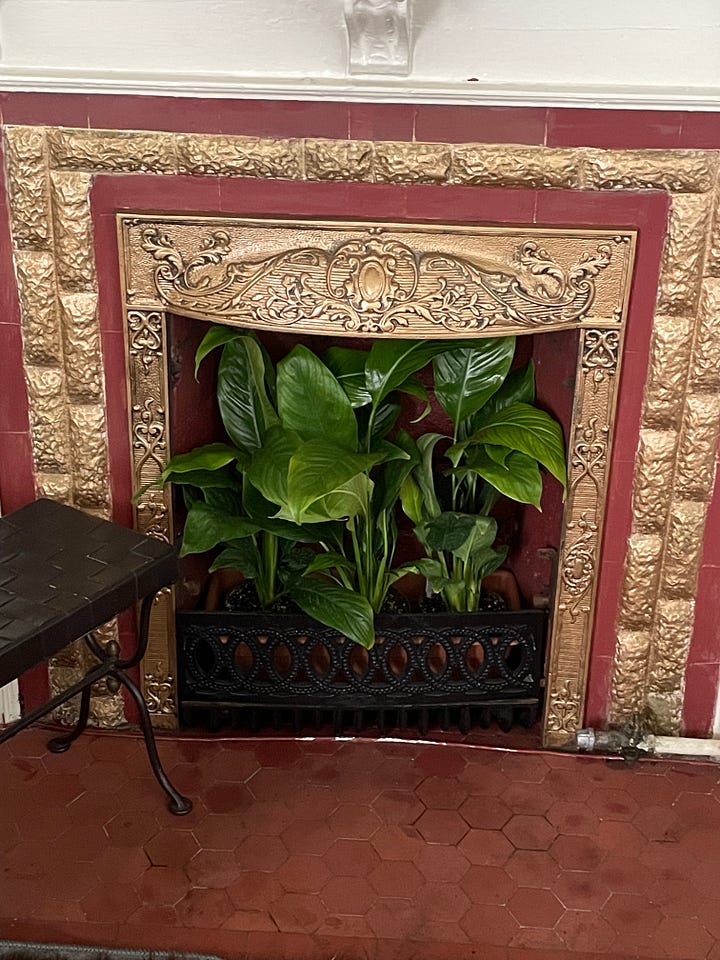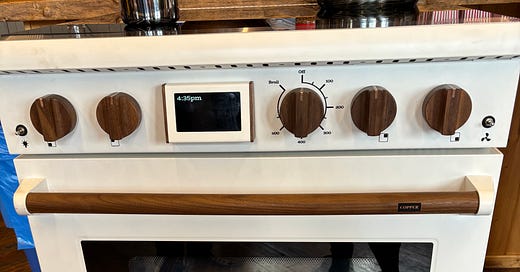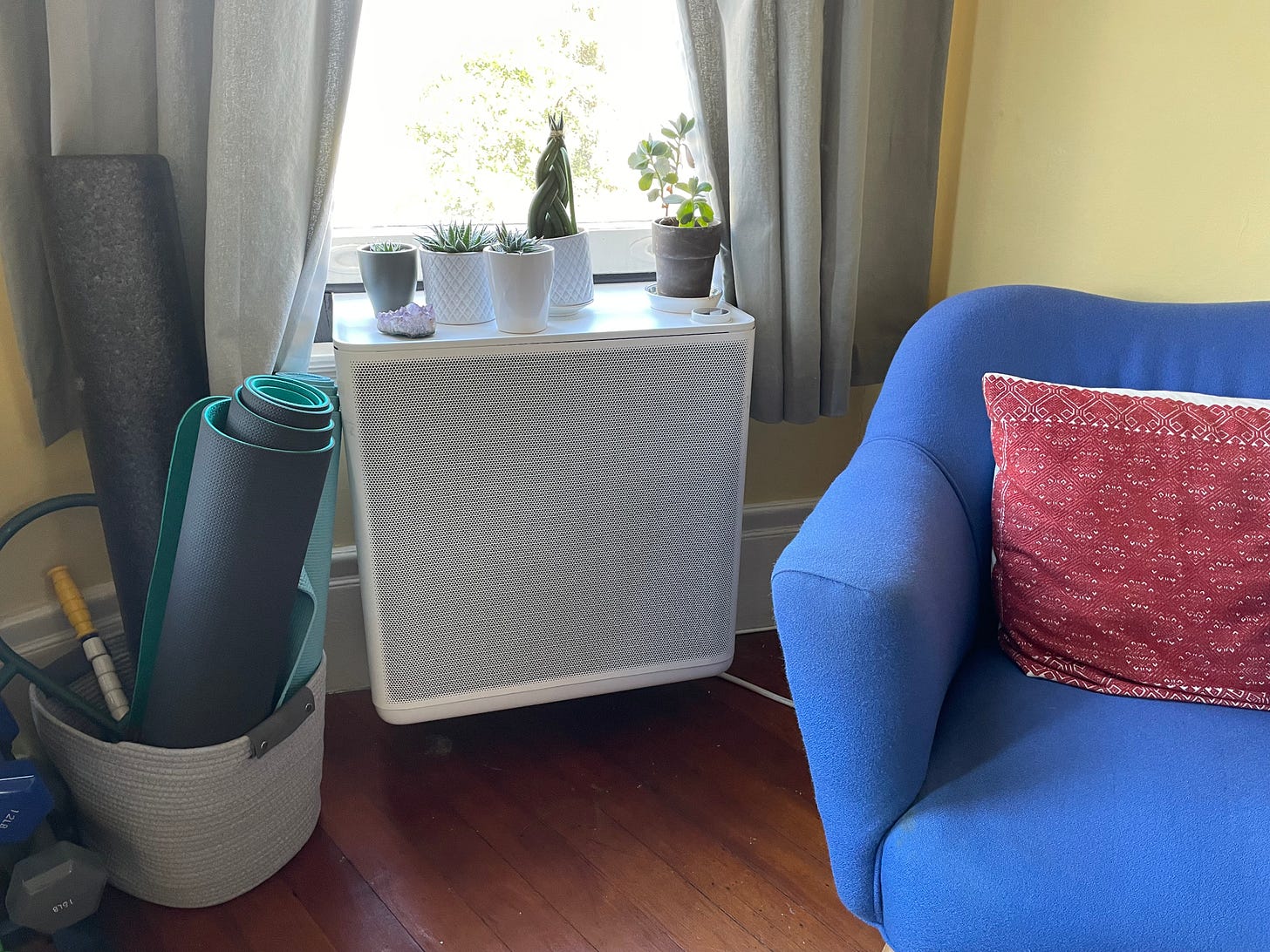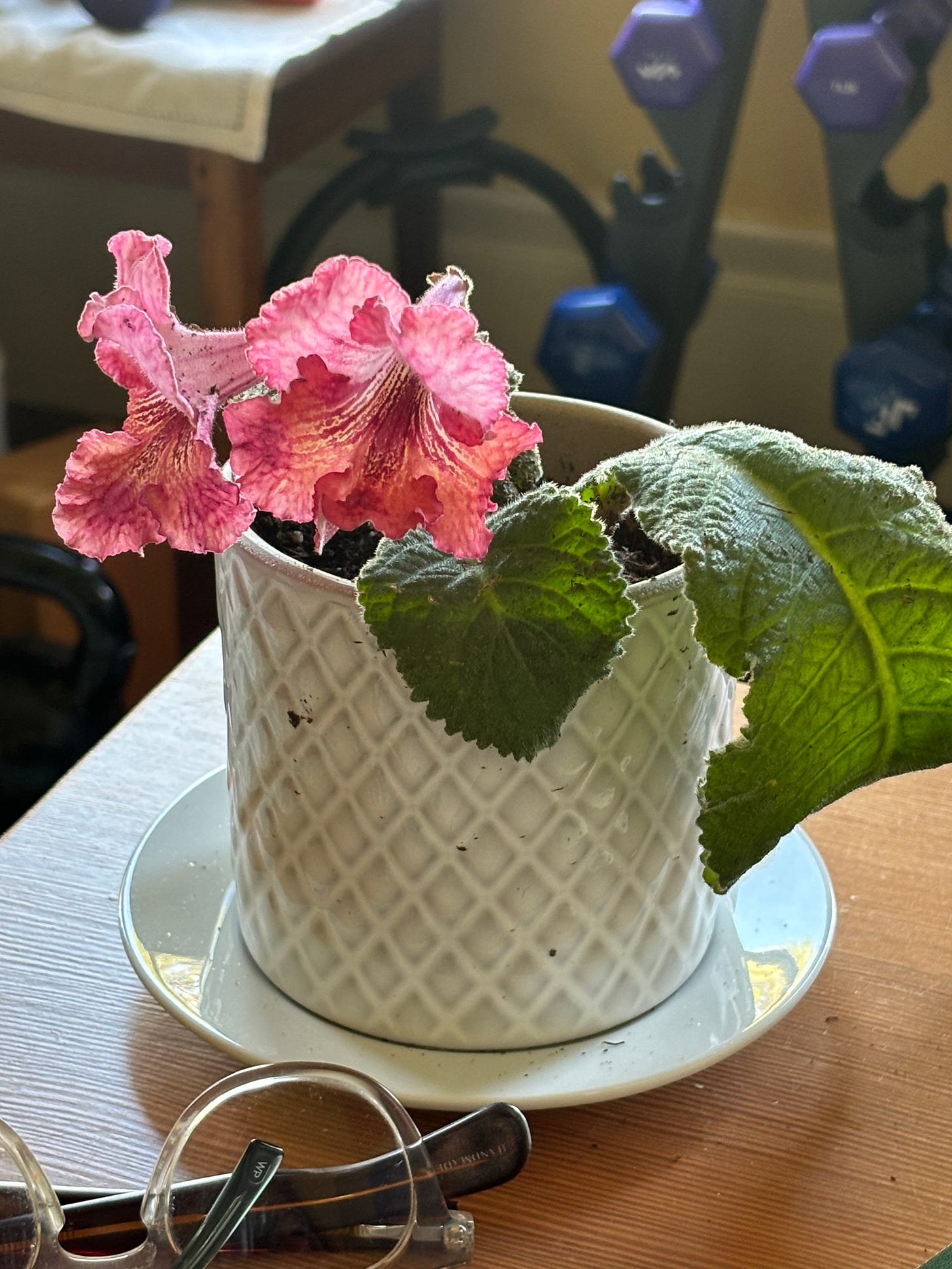It’s climate week in San Francisco, with over 300 events slated for climate activists and entrepreneurs, from climate justice sound baths to sessions where venture capitalists gather to discover some new gee-whiz technology for trying to pull carbon from the air. There are compostable appetizer plates all over town. It’s a lot of energy for alternative energy, which is necessary and optimistic, if sometimes misguided (see carbon sequestration, above).
I attended a session called “Market Transformation for Residential Electrification” at OtherLab, an innovation incubator housed in San Francisco’s old organ factory, which was so popular that there was an 85-person waitlist. The panelists, representatives from the Building Decarbonization Coalition, Rewiring America, and two start-up companies that are in the modern electric appliance business, Gradient and Channing St Copper, discussed the incentives and policies that can help people transition their homes from ones that run on oil and gas to ones that run on electricity backed by renewables.
That was all interesting and important—switching from fossil fuel appliances to modern electric ones backed by renewables is our best hope for confronting climate change, and it’s not an easy transition —but I spent the entire hour and a half obsessed with something else: Charlie.
On the way in, I had a chance to glance at Charlie, slick and handsome, and really, really hot.
This is Charlie. I am obsessed with Charlie. Charlie is an induction range built by Copper that plugs into a regular household outlet.
Charlie is a gleaming induction stove with walnut knobs, a digital display, and a Le Creuset-blue interior, which, unlike other induction ranges, can plug into a regular 120V household plug because it has battery back-up. This is a key innovation because if, like me, you live in a place that doesn’t have 220 electricity and your landlord is unlikely to provide it, you can still have a full-size induction range.
Why do I want an induction range (besides the moral advantage that it doesn’t add carbon to the atmosphere)? They’re just far superior, safer, cleaner, more efficient machines than gas stoves. And they’re fantastic to cook with.
I already cook with a two-burner induction cooktop, and like it. Aside from the advantage of not spewing nasty carbon into the air (even when a gas stove is turned off it emits methane), it’s just a way better machine. It boils water twice as fast. The surface doesn’t get hot, just the food. It somehow works with magnets, which I don’t quite understand, but accept as part of the magic that is an induction range.
But my two-burner has some real limitations. The first is that I like to cook, and sometimes two burners don’t cut it. I want to boil the pasta water, steam the artichokes, and cook the sofritto of garlic, anchovies and red pepper flakes all at once (see my Substack post on artichokes for more). So that’s three burners. Actually, I prefer to roast the artichokes, and I can’t stuff that much vegetable matter into my toaster oven, which is what I use now (I once tried to use the gas oven’s stove while cooking something with the induction cooktop on top and, well, plastic melts).
My two-burner induction cooktop sits on top of the gas stove I’d like to get rid of, and only one of the burners goes all the way to high.
The other limitation of my induction cooktop is that only one of the burners goes all the way to high. The other peters out at 5 out of 8.
While I was examining Charlie, Lisa Pinckney, a chef who works for Copper and takes the stove around to demonstrate at farmer’s markets, told me you can crank every burner up to high and it’ll handle the heat. That’s a lot of BTUs.
This is amazIng because all that heat is coming from one 120 volt plug, the same as you use for your toaster oven. Charlie a really nifty piece of technology. It has a built-in battery that allows it to emit high heat without blowing your fuses. This makes Charlie an “Energy Storage Equipped Appliance,” which is an exciting new technological development.
I want Charlie.
Charlie is about $5000, if you could get one, but right now Charlie has an even longer waiting list than a climate talk at OtherLab. Also there’s no way my landlord is going to spring for a new induction stove unless she’s forced to do it (see hurdles to market transformation, above). Some landlords will eventually replace gas stoves with induction ones when the prices reach parity with other stoves, and when new appliance standards make gas stoves obsolete, which is going to be soon. Sam Calisch, the CEO of Copper, told me that his very first order, surprisingly, was from a landlord who was going to put it into a tenant unit.
But if I’m going to get one I’m going to have to buy it myself and hope the landlord doesn’t notice I swapped it out (I’m actually on my second stove that I’ve swapped for the crappy one I moved in with forty years ago, thanks to an aunt who also likes to cook and kindly gave me her six-burner cast-offs, from Wedgewood to Thermidor).
It’s going to take me a while to save up to buy Charlie, waitlist or not, but there are some incentives out there for induction stoves. Under the Inflation Reduction Act (IRA), the bad name for the world’s biggest climate bill, the Electrification Rebates cover electric/induction stove costs up to $840 for lower-income people, and 50% of the stove costs up to $840. So that’s a little help.
A new gas stove of a similar quality goes for about $3500 (and up), so Charlie’s upfront cost is a little more, though it’s cleaner and way more efficient than a gas stove. And while PG&E is gauging us in California on our electric rates (they have to pay for burning down Paradise while keeping their C-suite executives rich and the California Public Utilities Commission inexplicably went along with the scam), fortunately, the electricity that powers induction stoves is all renewable.
Induction stoves are a no-brainer. When your gas stove dies, you’ll have to replace it anyway, and if you don’t do it with an induction stove, you’re stuck spewing carbon into the air for the lifetime of the appliance, over 10 years. According to the World Economic Forum, gas stoves pump 2.6 million tons of methane into the atmosphere each year, the equivalent of 500,000 cars.
Induction cooktops are relatively cheap (my two-burner Cuisinart was $229), but Charlie is bit more dear, as are induction ranges that require 240 electricity (all but Charlie). At the presentation, Nicole Staple, VP of Growth at the non-profit Rewiring America, talked about her organization’s focus on the “cost waterfall” of electrification, which is the problem that new electric machines have upfront costs, even though they’re much cheaper to run in the long-run. Think of the big up-front cost of an electric car, which saves lots of money in the long run by not having to buy gas. Incentives and rebates to help people make the switch — but it’s still not enough.
“Consumers who are not able to participate now need to be able to enter the market,” she said. The group is coming up with creative ways to finance electric machines for people who can’t otherwise afford them. Rewiring’s team included some of the big brains who got the IRA passed, and they recently hired Stacey Abrams (yes, that Stacey Abrams) to working on amping up electrification in low-income and underserved communities.
As Saul Griffith, founder of OtherLab and Rewiring America and author of Electrify, likes to point out, you can’t just electrify everything for rich people to fight climate change, it has to be everyone.
Anyway, I’m going to have to wait for Charlie. But I’m going to get him.
The other incredibly cool (pun intended) machine at the presentation was the Gradient heat pump. I am lucky enough to already have a Gradient. Like the Charlie, the Gradient offers an electric solution that can plug into a regular home outlet. It’s a heat pump, which heats and cools the air. I love my Gradient almost as much as I know I’m going to love Charlie.
The Gradient, which heats and cools, is easy to install and plugs into a regular home outlet
I live in an uninsulated 1906 apartment, so old that you can still see where the gas was piped in the ceiling for the lights, which seems amazingly dangerous until you consider it’s still being piped in to the water heater and the stove. Our old gas heater in the fireplace spewed toxic fumes, so my husband Peter and I yanked it out, tapped the gas line, cleaned behind the gross heater in what used to be a fireplace (mouse poop!), and filled it with peace lilies. We gained about four feet of space in the living room, cleaner air, and some nice plants.
To make up for the loss of the heater, we installed a woo-warmer in the living room, which is like an electric blanket for the floor – one that dogs in particular like to lie on. This is a pretty modest investment (about $200, depending on the size of the area rug) for something that heats up the room rather cozily.


My gas heater, before and after I ditched the gas
But my office, which has big windows that look over the garden, is north-facing and rather cold. Before the Gradient, I often typed in a puffer jacket and fingerless gloves. Fortunately, I was able to beta test a Gradient, which is as easy to install as a window air conditioner, plugs into the wall, looks attractive, and keeps the temperature in my room toasty or cool, depending on what’s going on outside. Since I live in San Francisco, the Gradient doesn’t get a big workout on the A/C front, because it’s almost always 60 degrees outside, but it’s great to takes the edge off San Francisco’s foggy chill. Also, I have some picky streptocarpus plants that don’t like the temperature to drop below 60.
The streptocarpus (Cape Primrose) plants in my office love the Gradient.
Both of these technologies are hacks on existing technologies. They aren’t pie-in-the-sky technologies of powering things with hydrogen or sucking carbon out of the air to shoot into outer space. They’re variations on technologies we have now, but smarter.
Unlike some climate technologists, I’m convinced that the only way to address climate change is to stop putting carbon in the air in the first place, mainly by electrifying everything. I helped Saul Griffith write his book Electrify, which convinced me that we already have all the technology we need already to transition from a fossil-fuel based economy to an electric one backed by renewables. Over 40% of our carbon emissions come from our homes and the cars we drive, and if we can electrify the fossil fuel-burning machines in our homes, we stand a good chance of avoiding climate doom.
In practice, that means electrifying everything in our homes, swapping gas furnaces for heat pumps, gas guzzlers for EVs, hot water heaters for heat pump water heaters, gas stoves for induction stoves, and heat pumps for dryers. Did you see how many times I wrote “heat pumps” in that last sentence? Like my Gradient, heat pumps are amazing—they heat and cool your house with the same appliance, one that is three times as efficient as an old air conditioner or space heater. They come in all sizes for all kinds of spaces.
The science works, but it takes longer for people to see the light. There’s a lot of old propaganda, for instance, about “cooking with gas,” which makes people slaves to the little blue flames. People who have been focusing on the transition from fossil fuels to electricity are trying to speed people’s adoption of new, modern electric machines.
James McBride, one of the founders of OtherLab, said that while they used to focus on technology that could be deployed in a decade, “We don’t have a lot of ten-year windows left.”
I wondered whether we’ll really be able to make the transition fast enough, particularly in situations where people are unlikely to want to spend any money, such as landlords.
But Jed Holtzman from the Rocky Mountain Institute, who was seated near me, told me that it won’t be long before all those old gas appliances will become obsolete and illegal in California. In 2027, you won’t be able to be a gas water heater in a residential building, and by 2029 you won’t be able to buy gas furnaces. Same goes for commercial buildings in 2031. So we aren’t far from zero-emission appliances, even if, for some landlords, that will mean buying old resistance heaters and stoves (the cruddy old ones with coil burners).
The transition is happening now. I’m cooking on an induction cooktop and dreaming for the moment when Charlie will come into my life and make all my cooking dreams come true.
Full disclosure: I have done paid work for Rewiring America, OtherLab, and Saul Griffith.








